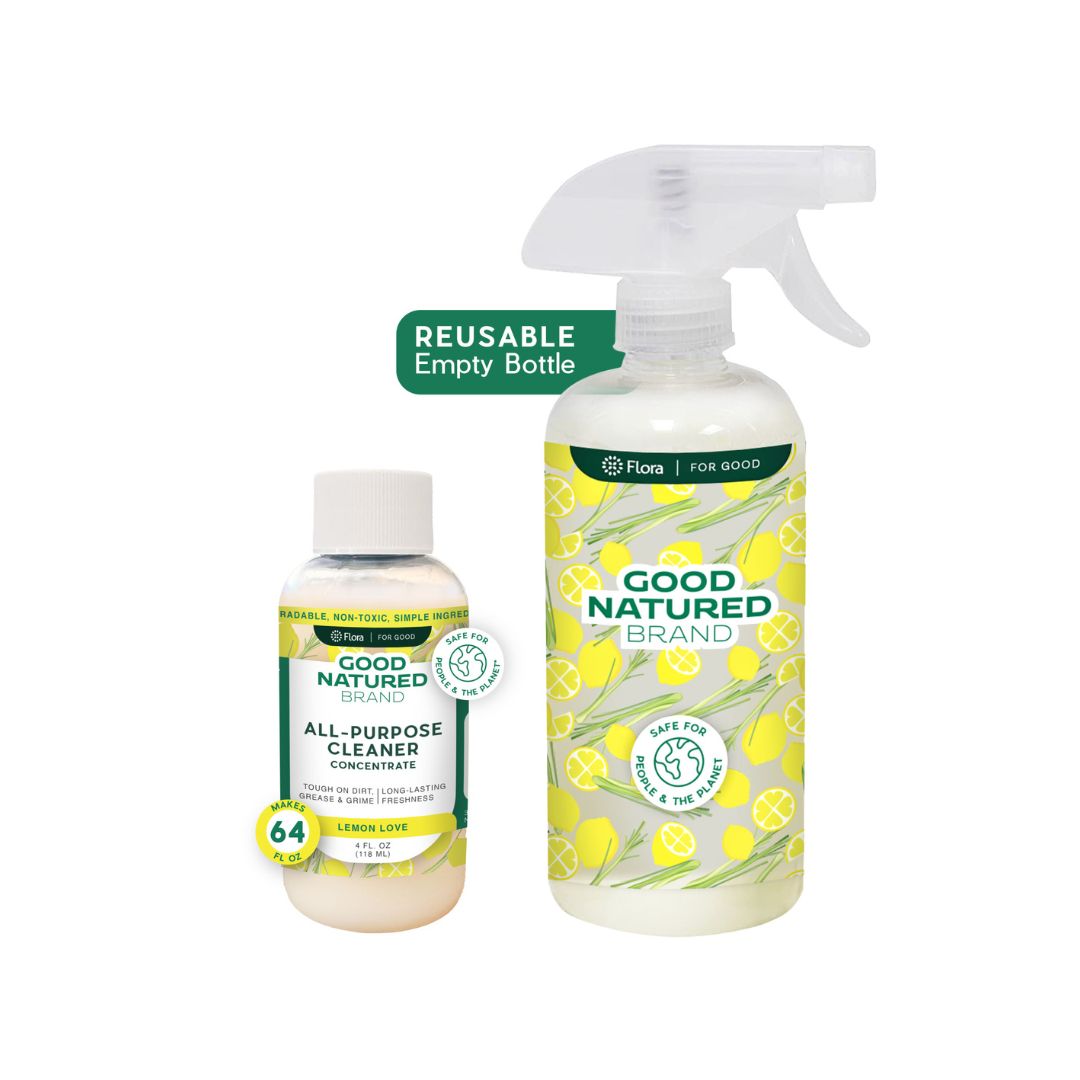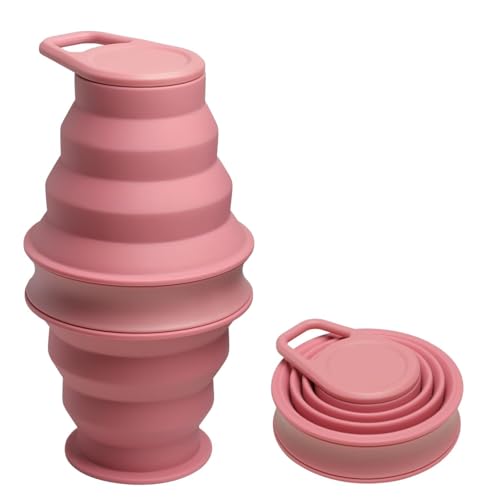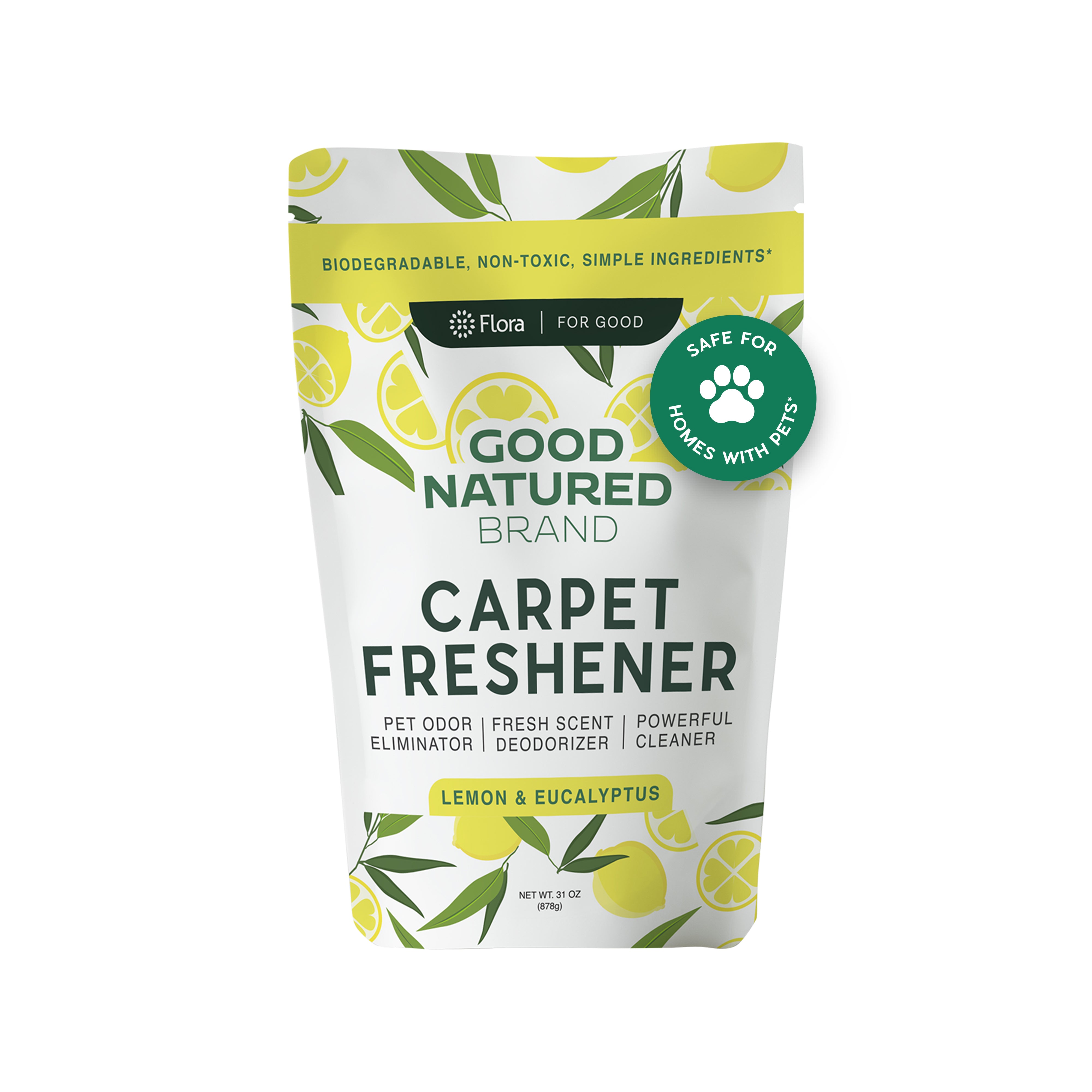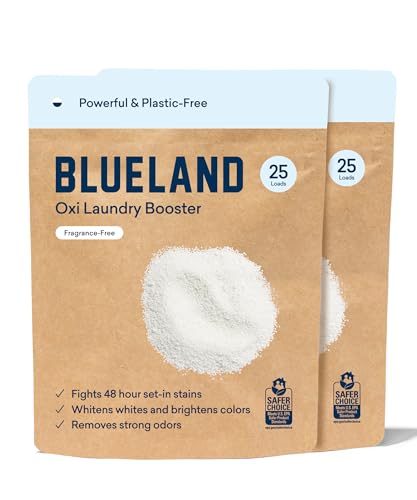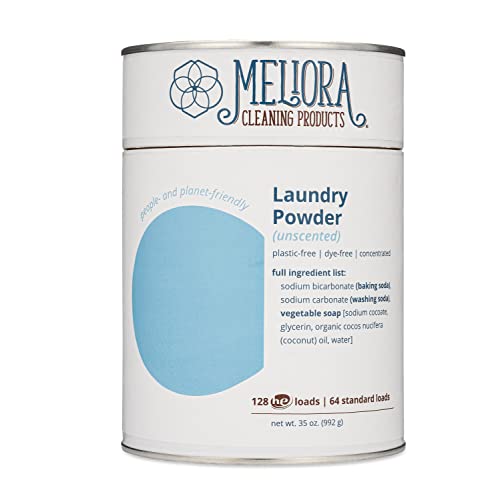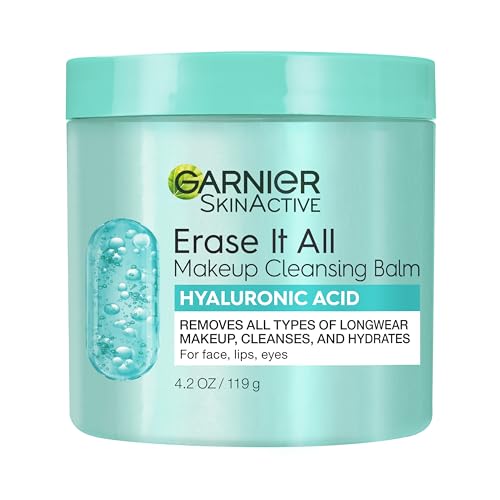
Garnier Makeup Remover Balm - Hydrating Cleansing with Hyaluronic Acid, 24H Moisture - 4.2oz


Citric Acid
Medium RiskCitric acid is an alpha hydroxy acid used in personal care products primarily for its role as a pH adjuster and natural preservative. It occurs naturally in citrus fruits and is commonly utilized in various formulations for its chelating properties and mild exfoliation benefits.
Sustai Insights
Citric acid offers functional benefits as an effective preservative and pH stabilizer, contributing to product longevity and stability. It is biodegradable and derived from renewable sources. Health risks are low, with minimal concerns regarding carcinogenicity, allergies, and reproductive toxicity. However, moderate use restrictions exist due to potential irritation at high concentrations. Environmental risks are limited, as citric acid is not known to accumulate in ecosystems. Regulatory agencies have no significant advisories against its use. Overall, it is assessed as a medium-risk ingredient, with safe usage practices recommended and alternatives available.
Phenoxyethanol
Medium RiskPhenoxyethanol is a preservative used in cosmetics and personal care products to prevent microbial growth and extend shelf life. It is commonly found in formulations such as lotions, creams, and serums.
Sustai Insights
Phenoxyethanol serves effectively as a preservative, ensuring product stability and safety by inhibiting microbial growth. It is considered to have low health risks regarding carcinogenicity, allergies, and reproductive toxicity. However, moderate use restrictions exist, and regulatory bodies have advised caution in specific applications. Environmental concerns include its potential as a pollutant, although it is not highly bioaccumulative. Overall, the ingredient presents a medium risk level, with safe usage practices recommended and alternative preservatives available for those seeking greener options.
Trihydroxystearin
Low RiskTrihydroxystearin is a lipid composed of glycerol and stearic acid. It serves primarily as an emulsifier and thickening agent in cosmetic formulations, helping to stabilize and improve the texture of products.
Sustai Insights
Trihydroxystearin offers functional benefits as an effective emulsifier and thickening agent, enhancing product stability. It is considered low risk for health concerns, including carcinogenicity, allergies, and reproductive toxicity. Environmentally, it poses minimal hazards, with no significant pollutant or bioaccumulation potential. Regulatory assessments indicate no restrictions, supporting its safety for use. Overall, it is assessed as low risk, with no significant adverse effects noted, making it a suitable ingredient in cosmetic formulations.
Sodium Hyaluronate
Low RiskSodium hyaluronate is the sodium salt of hyaluronic acid, a naturally occurring polysaccharide in the body. It functions primarily as a humectant in cosmetic formulations, retaining moisture and enhancing skin hydration, contributing to the overall texture and appearance of products.
Sustai Insights
Sodium hyaluronate offers several functional benefits, including effective moisture retention and skin hydration. It is considered safe with low concerns regarding carcinogenicity, allergies, or reproductive toxicity. Environmentally, it is not classified as a pollutant or bioaccumulative. Regulatory bodies do not impose significant restrictions on its use. Overall, it is assessed as low risk, making it a favorable ingredient in cosmetic formulations.
D Gluco D Mannan
Low RiskD-gluco-D-mannan is a polysaccharide derived from the konjac plant, primarily used as a thickening agent, emulsifier, and stabilizer in cosmetic formulations. It contributes to texture and viscosity, enhancing the overall product experience without imparting significant color or odor.
Sustai Insights
D-gluco-D-mannan offers functional benefits as a thickener and stabilizer, with low risks associated with cancer, allergies, and reproductive toxicity. Environmental impacts are minimal, as it is biodegradable and sustainably sourced. Regulatory assessments indicate no significant health hazards or restrictions, leading to an overall low risk level. Safe usage practices involve following recommended concentrations in formulations. Alternatives include other natural thickeners like xanthan gum, which may provide similar benefits.
Peg 20 Glyceryl Triisostearate
Low RiskPEG-20 glyceryl triisostearate is a triester of glycerin and isostearic acid, commonly used as an emulsifier and solubilizer in cosmetic and personal care products. It aids in blending oil and water-based ingredients, improving texture and stability.
Sustai Insights
PEG-20 glyceryl triisostearate serves effectively as an emulsifier and contributes to product stability. It is generally considered low risk for health concerns such as carcinogenicity, allergies, and reproductive toxicity. However, contamination during production may be a concern. Environmentally, it poses low risk for bioaccumulation or pollution. Regulatory bodies have not imposed significant restrictions, indicating its acceptance in formulations. Safe usage practices should be followed, and alternatives like natural emulsifiers could be considered for improved sustainability. Overall, it is assessed to have a low risk profile.
Peg 30 Dipolyhydroxystearate
Low RiskPEG-30 dipolyhydroxystearate is a polyethylene glycol derivative used primarily as an emulsifier in cosmetic and personal care products. It helps stabilize formulations by allowing oil and water to mix effectively, improving texture and consistency.
Sustai Insights
PEG-30 dipolyhydroxystearate is effective as an emulsifier, enhancing product stability and texture. It is considered low risk for health concerns such as cancer, allergies, and reproductive toxicity. However, contamination concerns are noted. Environmentally, it has low pollutant potential and is not bioaccumulative. Regulatory bodies have not issued restrictions, indicating its safe use within established guidelines. Overall, it is assessed as low risk, making it a suitable option in formulations.
Polysorbate 20
Low RiskPolysorbate 20 (Tween 20) is a non-ionic surfactant and emulsifier commonly used in personal care and cosmetic products. It helps to solubilize oils in water, improving product stability and texture. This ingredient is derived from sorbitol and fatty acids, making it useful for a variety of formulations.
Sustai Insights
Polysorbate 20 offers functional benefits as an effective emulsifier, enhancing product stability and texture. It is considered to have low health risks, with minimal concerns regarding carcinogenicity, allergenicity, or reproductive toxicity. Environmentally, it poses low pollutant potential and is not bioaccumulative. Regulatory bodies do not impose significant restrictions, indicating a low overall risk level. Safe usage practices should be followed to mitigate any irritation, and while alternatives exist, this ingredient is generally recognized for its efficacy and safety in cosmetic formulations.
Ethylhexyl Palmitate
Low RiskEthylhexyl palmitate is an ester derived from 2-ethylhexanol and palmitic acid. It is commonly used in cosmetic formulations as an emollient, providing a smooth and soft feel to the skin while enhancing product texture and stability.
Sustai Insights
Ethylhexyl palmitate serves effectively as an emollient, contributing to skin smoothness and improving product formulation. It is generally recognized as having low health risks, with concerns primarily related to moderate skin, eye, and respiratory irritation. Environmentally, it poses low pollutant potential and is not bioaccumulative. Regulatory bodies have not placed significant restrictions on its use, indicating a low overall risk. Safe usage practices and alternatives like other natural emollients can be considered, reinforcing its low risk profile.
Polyethylene
Low RiskPolyethylene is a polymer of ethylene monomers, widely used in various applications, including packaging, containers, and household products. It is known for its durability, flexibility, and resistance to moisture and chemicals, making it a common choice in many consumer goods.
Sustai Insights
Polyethylene serves as a versatile material offering functional benefits such as durability and moisture resistance. It poses low health risks, including minimal potential for carcinogenicity and allergies, although moderate irritation to skin, eyes, or lungs can occur. Environmentally, it is not bioaccumulative but does contribute to plastic pollution. Regulatory bodies currently impose no significant restrictions on its use. Overall, the risk associated with polyethylene is assessed as low. For those seeking alternatives, biodegradable polymers may offer more sustainable options.
Ppg 26 Buteth 26
Low RiskPPG-26-Buteth-26 is a polyoxypropylene, polyoxyethylene glycol ether primarily used as a surfactant and emulsifier in cosmetic formulations. It aids in the dispersion of ingredients and enhances product stability, contributing to the overall texture and feel of the product.
Sustai Insights
PPG-26-Buteth-26 serves effectively as an emulsifier, improving the stability and texture of formulations while posing low health risks, such as low carcinogenicity and irritant potential. Environmentally, it is assessed as low-risk with no significant pollutant or bioaccumulation concerns. Regulatory agencies have minimal restrictions on its use, confirming its safety profile. Therefore, the overall risk level is low, and it is a suitable ingredient in personal care products, with no immediate alternatives required.
Peg 40 Hydrogenated Castor Oil
Low RiskPEG-40 hydrogenated castor oil is a polyethylene glycol derivative of hydrogenated castor oil, commonly used as an emulsifier and surfactant in various cosmetic and personal care products. It helps to improve the texture and stability of formulations by facilitating the blending of oil and water-based ingredients.
Sustai Insights
PEG-40 hydrogenated castor oil offers functional benefits such as effective emulsification and stability enhancement in formulations. It is considered low risk for health concerns, including carcinogenicity and allergenic potential. Environmentally, it is not associated with significant hazards, and regulatory bodies have not imposed strict restrictions. Safe usage practices involve adhering to recommended concentrations. Overall, this ingredient presents a low risk profile with limited environmental impact, making it a suitable choice in cosmetic applications.
Saponified Simmondsia Chinensis (Jojoba) Seed Oil
Low RiskSaponified Simmondsia Chinensis (Jojoba) Seed Oil is a lipid substance derived from the oil of jojoba seeds. It is commonly used in cosmetic formulations for its emollient properties, helping to moisturize and soften the skin. This ingredient is produced by the saponification process, which transforms the oil into a more stable form suitable for various applications.
Sustai Insights
Saponified Simmondsia Chinensis (Jojoba) Seed Oil offers functional benefits as an effective moisturizer and emollient, enhancing product texture and skin feel. It is biodegradable and sustainably sourced, aligning with eco-friendly practices. Health risks are minimal, with low concerns for carcinogenicity, allergies, or reproductive toxicity. Environmental impact is low, with no significant pollutant potential. Regulatory bodies do not list any restrictions. Overall, the ingredient is assessed as low risk, making it a suitable choice for cosmetic formulations.
Octyldodecanol
Low RiskOctyldodecanol is a long-chain fatty alcohol commonly used in cosmetic formulations. It serves primarily as an emollient and thickening agent, contributing to the texture and feel of products while enhancing skin moisture retention.
Sustai Insights
Octyldodecanol is valued for its emollient properties, enhancing skin hydration and product texture. It is generally considered low-risk regarding carcinogenicity, allergies, and reproductive toxicity. Moderate irritation may occur with skin, eye, or lung exposure. It poses minimal environmental hazards, with no bioaccumulation concerns. Regulatory status is favorable, with no significant restrictions. Overall, it is assessed as low risk, with safe usage practices recommended, and alternatives like octyl palmitate may be considered.
Water
Low RiskWater is a clear, colorless liquid essential for various biological processes. It serves as a solvent in formulations, facilitating the dissolution of other ingredients and enhancing product texture and application. Additionally, water plays a crucial role in hydration and is a key component in many cosmetic and personal care products.
Sustai Insights
Water is an effective solvent and hydrator, contributing to the texture and efficacy of formulations. It is biodegradable and generally regarded as safe, with low concerns regarding carcinogenicity, allergies, and reproductive toxicity. However, excessive water usage can lead to environmental concerns, particularly regarding resource depletion. Regulatory bodies do not impose restrictions on water use in cosmetics. Overall, the risks associated with water are low, making it a safe and essential ingredient.
Tocopherol
Low RiskTocopherols are a class of naturally occurring compounds, primarily known for their role as antioxidants. They are commonly used in cosmetic and skincare products to help stabilize formulations and protect ingredients from oxidative damage.
Sustai Insights
Tocopherols provide functional benefits such as antioxidant protection and skin conditioning. They are generally recognized as safe, with low concerns regarding carcinogenicity, allergies, and reproductive toxicity. However, enhanced skin absorption and potential endocrine disruption are noted. Regulatory bodies have not imposed significant restrictions on tocopherols, categorizing the overall risk as low. Safe usage practices should be observed, and while alternatives exist, tocopherols remain a viable option in formulations.
Caprylyl Glycol
Low RiskCaprylyl glycol (1,2-octanediol) is a multifunctional cosmetic ingredient primarily used as a skin-conditioning agent and preservative. It is derived from caprylic acid, a fatty acid found in coconut oil, and is commonly included in personal care products for its moisturizing properties.
Sustai Insights
Caprylyl glycol offers functional benefits such as acting as an effective humectant and preservative, enhancing skin hydration and product stability. It is considered to have low health risks, with no significant concerns regarding carcinogenicity, allergies, or reproductive toxicity. Environmentally, it poses minimal risks, being non-bioaccumulative and not linked to pollution. Regulatory assessments affirm its safety, with no major advisories against its use. Overall, the ingredient is assessed to have a low risk, making it a suitable choice in cosmetic formulations.
Butyrospermum Parkii (Shea) Butter
Low RiskButyrospermum parkii (shea) butter is a vegetable fat derived from the nuts of the shea tree. It is commonly used in cosmetic formulations for its emollient properties, providing moisture and improving skin texture. Additionally, shea butter is known for its ability to enhance the stability of products and deliver a creamy texture.
Sustai Insights
Shea butter offers functional benefits as an effective moisturizer, enhancing skin barrier function and texture. It is sustainably sourced and biodegradable, contributing to eco-friendliness. Health-wise, it is associated with low risks for carcinogenicity, allergies, and reproductive toxicity. Environmental impacts are minimal, with no significant pollutant potential identified. Regulatory assessments indicate no current restrictions. Overall, the ingredient presents a low risk, making it a favorable choice in cosmetic formulations.
Trihydroxystearin
Low RiskTrihydroxystearin is a lipid composed of glycerol and stearic acid. It serves primarily as an emulsifier and thickening agent in cosmetic formulations, helping to stabilize and improve the texture of products.
Sustai Insights
Trihydroxystearin offers functional benefits as an effective emulsifier and thickening agent, enhancing product stability. It is considered low risk for health concerns, including carcinogenicity, allergies, and reproductive toxicity. Environmentally, it poses minimal hazards, with no significant pollutant or bioaccumulation potential. Regulatory assessments indicate no restrictions, supporting its safety for use. Overall, it is assessed as low risk, with no significant adverse effects noted, making it a suitable ingredient in cosmetic formulations.
Sodium Hyaluronate
Low RiskSodium hyaluronate is the sodium salt of hyaluronic acid, a naturally occurring polysaccharide in the body. It functions primarily as a humectant in cosmetic formulations, retaining moisture and enhancing skin hydration, contributing to the overall texture and appearance of products.
Sustai Insights
Sodium hyaluronate offers several functional benefits, including effective moisture retention and skin hydration. It is considered safe with low concerns regarding carcinogenicity, allergies, or reproductive toxicity. Environmentally, it is not classified as a pollutant or bioaccumulative. Regulatory bodies do not impose significant restrictions on its use. Overall, it is assessed as low risk, making it a favorable ingredient in cosmetic formulations.
D Gluco D Mannan
Low RiskD-gluco-D-mannan is a polysaccharide derived from the konjac plant, primarily used as a thickening agent, emulsifier, and stabilizer in cosmetic formulations. It contributes to texture and viscosity, enhancing the overall product experience without imparting significant color or odor.
Sustai Insights
D-gluco-D-mannan offers functional benefits as a thickener and stabilizer, with low risks associated with cancer, allergies, and reproductive toxicity. Environmental impacts are minimal, as it is biodegradable and sustainably sourced. Regulatory assessments indicate no significant health hazards or restrictions, leading to an overall low risk level. Safe usage practices involve following recommended concentrations in formulations. Alternatives include other natural thickeners like xanthan gum, which may provide similar benefits.
Peg 20 Glyceryl Triisostearate
Low RiskPEG-20 glyceryl triisostearate is a triester of glycerin and isostearic acid, commonly used as an emulsifier and solubilizer in cosmetic and personal care products. It aids in blending oil and water-based ingredients, improving texture and stability.
Sustai Insights
PEG-20 glyceryl triisostearate serves effectively as an emulsifier and contributes to product stability. It is generally considered low risk for health concerns such as carcinogenicity, allergies, and reproductive toxicity. However, contamination during production may be a concern. Environmentally, it poses low risk for bioaccumulation or pollution. Regulatory bodies have not imposed significant restrictions, indicating its acceptance in formulations. Safe usage practices should be followed, and alternatives like natural emulsifiers could be considered for improved sustainability. Overall, it is assessed to have a low risk profile.
Peg 30 Dipolyhydroxystearate
Low RiskPEG-30 dipolyhydroxystearate is a polyethylene glycol derivative used primarily as an emulsifier in cosmetic and personal care products. It helps stabilize formulations by allowing oil and water to mix effectively, improving texture and consistency.
Sustai Insights
PEG-30 dipolyhydroxystearate is effective as an emulsifier, enhancing product stability and texture. It is considered low risk for health concerns such as cancer, allergies, and reproductive toxicity. However, contamination concerns are noted. Environmentally, it has low pollutant potential and is not bioaccumulative. Regulatory bodies have not issued restrictions, indicating its safe use within established guidelines. Overall, it is assessed as low risk, making it a suitable option in formulations.
Polysorbate 20
Low RiskPolysorbate 20 (Tween 20) is a non-ionic surfactant and emulsifier commonly used in personal care and cosmetic products. It helps to solubilize oils in water, improving product stability and texture. This ingredient is derived from sorbitol and fatty acids, making it useful for a variety of formulations.
Sustai Insights
Polysorbate 20 offers functional benefits as an effective emulsifier, enhancing product stability and texture. It is considered to have low health risks, with minimal concerns regarding carcinogenicity, allergenicity, or reproductive toxicity. Environmentally, it poses low pollutant potential and is not bioaccumulative. Regulatory bodies do not impose significant restrictions, indicating a low overall risk level. Safe usage practices should be followed to mitigate any irritation, and while alternatives exist, this ingredient is generally recognized for its efficacy and safety in cosmetic formulations.
Ethylhexyl Palmitate
Low RiskEthylhexyl palmitate is an ester derived from 2-ethylhexanol and palmitic acid. It is commonly used in cosmetic formulations as an emollient, providing a smooth and soft feel to the skin while enhancing product texture and stability.
Sustai Insights
Ethylhexyl palmitate serves effectively as an emollient, contributing to skin smoothness and improving product formulation. It is generally recognized as having low health risks, with concerns primarily related to moderate skin, eye, and respiratory irritation. Environmentally, it poses low pollutant potential and is not bioaccumulative. Regulatory bodies have not placed significant restrictions on its use, indicating a low overall risk. Safe usage practices and alternatives like other natural emollients can be considered, reinforcing its low risk profile.
Polyethylene
Low RiskPolyethylene is a polymer of ethylene monomers, widely used in various applications, including packaging, containers, and household products. It is known for its durability, flexibility, and resistance to moisture and chemicals, making it a common choice in many consumer goods.
Sustai Insights
Polyethylene serves as a versatile material offering functional benefits such as durability and moisture resistance. It poses low health risks, including minimal potential for carcinogenicity and allergies, although moderate irritation to skin, eyes, or lungs can occur. Environmentally, it is not bioaccumulative but does contribute to plastic pollution. Regulatory bodies currently impose no significant restrictions on its use. Overall, the risk associated with polyethylene is assessed as low. For those seeking alternatives, biodegradable polymers may offer more sustainable options.
Ppg 26 Buteth 26
Low RiskPPG-26-Buteth-26 is a polyoxypropylene, polyoxyethylene glycol ether primarily used as a surfactant and emulsifier in cosmetic formulations. It aids in the dispersion of ingredients and enhances product stability, contributing to the overall texture and feel of the product.
Sustai Insights
PPG-26-Buteth-26 serves effectively as an emulsifier, improving the stability and texture of formulations while posing low health risks, such as low carcinogenicity and irritant potential. Environmentally, it is assessed as low-risk with no significant pollutant or bioaccumulation concerns. Regulatory agencies have minimal restrictions on its use, confirming its safety profile. Therefore, the overall risk level is low, and it is a suitable ingredient in personal care products, with no immediate alternatives required.
Peg 40 Hydrogenated Castor Oil
Low RiskPEG-40 hydrogenated castor oil is a polyethylene glycol derivative of hydrogenated castor oil, commonly used as an emulsifier and surfactant in various cosmetic and personal care products. It helps to improve the texture and stability of formulations by facilitating the blending of oil and water-based ingredients.
Sustai Insights
PEG-40 hydrogenated castor oil offers functional benefits such as effective emulsification and stability enhancement in formulations. It is considered low risk for health concerns, including carcinogenicity and allergenic potential. Environmentally, it is not associated with significant hazards, and regulatory bodies have not imposed strict restrictions. Safe usage practices involve adhering to recommended concentrations. Overall, this ingredient presents a low risk profile with limited environmental impact, making it a suitable choice in cosmetic applications.
Saponified Simmondsia Chinensis (Jojoba) Seed Oil
Low RiskSaponified Simmondsia Chinensis (Jojoba) Seed Oil is a lipid substance derived from the oil of jojoba seeds. It is commonly used in cosmetic formulations for its emollient properties, helping to moisturize and soften the skin. This ingredient is produced by the saponification process, which transforms the oil into a more stable form suitable for various applications.
Sustai Insights
Saponified Simmondsia Chinensis (Jojoba) Seed Oil offers functional benefits as an effective moisturizer and emollient, enhancing product texture and skin feel. It is biodegradable and sustainably sourced, aligning with eco-friendly practices. Health risks are minimal, with low concerns for carcinogenicity, allergies, or reproductive toxicity. Environmental impact is low, with no significant pollutant potential. Regulatory bodies do not list any restrictions. Overall, the ingredient is assessed as low risk, making it a suitable choice for cosmetic formulations.
Octyldodecanol
Low RiskOctyldodecanol is a long-chain fatty alcohol commonly used in cosmetic formulations. It serves primarily as an emollient and thickening agent, contributing to the texture and feel of products while enhancing skin moisture retention.
Sustai Insights
Octyldodecanol is valued for its emollient properties, enhancing skin hydration and product texture. It is generally considered low-risk regarding carcinogenicity, allergies, and reproductive toxicity. Moderate irritation may occur with skin, eye, or lung exposure. It poses minimal environmental hazards, with no bioaccumulation concerns. Regulatory status is favorable, with no significant restrictions. Overall, it is assessed as low risk, with safe usage practices recommended, and alternatives like octyl palmitate may be considered.
Water
Low RiskWater is a clear, colorless liquid essential for various biological processes. It serves as a solvent in formulations, facilitating the dissolution of other ingredients and enhancing product texture and application. Additionally, water plays a crucial role in hydration and is a key component in many cosmetic and personal care products.
Sustai Insights
Water is an effective solvent and hydrator, contributing to the texture and efficacy of formulations. It is biodegradable and generally regarded as safe, with low concerns regarding carcinogenicity, allergies, and reproductive toxicity. However, excessive water usage can lead to environmental concerns, particularly regarding resource depletion. Regulatory bodies do not impose restrictions on water use in cosmetics. Overall, the risks associated with water are low, making it a safe and essential ingredient.
Tocopherol
Low RiskTocopherols are a class of naturally occurring compounds, primarily known for their role as antioxidants. They are commonly used in cosmetic and skincare products to help stabilize formulations and protect ingredients from oxidative damage.
Sustai Insights
Tocopherols provide functional benefits such as antioxidant protection and skin conditioning. They are generally recognized as safe, with low concerns regarding carcinogenicity, allergies, and reproductive toxicity. However, enhanced skin absorption and potential endocrine disruption are noted. Regulatory bodies have not imposed significant restrictions on tocopherols, categorizing the overall risk as low. Safe usage practices should be observed, and while alternatives exist, tocopherols remain a viable option in formulations.
Citric Acid
Medium RiskCitric acid is an alpha hydroxy acid used in personal care products primarily for its role as a pH adjuster and natural preservative. It occurs naturally in citrus fruits and is commonly utilized in various formulations for its chelating properties and mild exfoliation benefits.
Sustai Insights
Citric acid offers functional benefits as an effective preservative and pH stabilizer, contributing to product longevity and stability. It is biodegradable and derived from renewable sources. Health risks are low, with minimal concerns regarding carcinogenicity, allergies, and reproductive toxicity. However, moderate use restrictions exist due to potential irritation at high concentrations. Environmental risks are limited, as citric acid is not known to accumulate in ecosystems. Regulatory agencies have no significant advisories against its use. Overall, it is assessed as a medium-risk ingredient, with safe usage practices recommended and alternatives available.
Phenoxyethanol
Medium RiskPhenoxyethanol is a preservative used in cosmetics and personal care products to prevent microbial growth and extend shelf life. It is commonly found in formulations such as lotions, creams, and serums.
Sustai Insights
Phenoxyethanol serves effectively as a preservative, ensuring product stability and safety by inhibiting microbial growth. It is considered to have low health risks regarding carcinogenicity, allergies, and reproductive toxicity. However, moderate use restrictions exist, and regulatory bodies have advised caution in specific applications. Environmental concerns include its potential as a pollutant, although it is not highly bioaccumulative. Overall, the ingredient presents a medium risk level, with safe usage practices recommended and alternative preservatives available for those seeking greener options.
Caprylyl Glycol
Low RiskCaprylyl glycol (1,2-octanediol) is a multifunctional cosmetic ingredient primarily used as a skin-conditioning agent and preservative. It is derived from caprylic acid, a fatty acid found in coconut oil, and is commonly included in personal care products for its moisturizing properties.
Sustai Insights
Caprylyl glycol offers functional benefits such as acting as an effective humectant and preservative, enhancing skin hydration and product stability. It is considered to have low health risks, with no significant concerns regarding carcinogenicity, allergies, or reproductive toxicity. Environmentally, it poses minimal risks, being non-bioaccumulative and not linked to pollution. Regulatory assessments affirm its safety, with no major advisories against its use. Overall, the ingredient is assessed to have a low risk, making it a suitable choice in cosmetic formulations.
Butyrospermum Parkii (Shea) Butter
Low RiskButyrospermum parkii (shea) butter is a vegetable fat derived from the nuts of the shea tree. It is commonly used in cosmetic formulations for its emollient properties, providing moisture and improving skin texture. Additionally, shea butter is known for its ability to enhance the stability of products and deliver a creamy texture.
Sustai Insights
Shea butter offers functional benefits as an effective moisturizer, enhancing skin barrier function and texture. It is sustainably sourced and biodegradable, contributing to eco-friendliness. Health-wise, it is associated with low risks for carcinogenicity, allergies, and reproductive toxicity. Environmental impacts are minimal, with no significant pollutant potential identified. Regulatory assessments indicate no current restrictions. Overall, the ingredient presents a low risk, making it a favorable choice in cosmetic formulations.
Experience the transformative power of Garnier Erase It All Makeup Cleansing Balm, enriched with Hyaluronic Acid to effortlessly dissolve all makeup types while hydrating your skin. This versatile 3-in-1 balm serves as a makeup remover, facial cleanser, and even a rejuvenating mask, making it an essential addition to any skincare routine.
- Gentle Cleansing & Hydration: Formulated with Hyaluronic Acid, this balm cleanses while providing 24-hour hydration, leaving your skin feeling plump and refreshed.
- Effective Makeup Removal: Easily removes longwear makeup, including sunscreen, without harsh scrubbing, making it ideal for sensitive skin.
- Multi-Use Versatility: Use as a morning cleanser, evening makeup remover, or as a hydrating mask by applying for 10 minutes.
- Eco-Conscious Commitment: Cruelty-free and free from sulfates and silicones, this balm aligns with sustainable beauty practices.
- Non-Comedogenic Formula: Designed not to clog pores, ensuring a clean and clear complexion without irritation.
Garnier's dedication to greener beauty reflects in their ethical practices and community impact, making this cleansing balm a responsible choice for health-conscious consumers.
Subscribe & Save with Sustai
- Best Price Guarantee: Always enjoy the lowest prices on sustainable home essentials.
- No Surprises: We’ll notify you before shipping. No hidden fees, ever.
- You’re in Charge: Change, pause, or cancel your subscription anytime with ease.
- Eco-Friendly Deliveries: Our grouped shipments mean less packaging and lower emissions.
Join us on a sustainable journey. Special offers for a limited time! Prices and promotions may change.
Recommended Products
Experience the transformative power of Garnier Erase It All Makeup Cleansing Balm, enriched with Hyaluronic Acid to effortlessly dissolve all makeup types while hydrating your skin. This versatile 3-in-1 balm serves as a makeup remover, facial cleanser, and even a rejuvenating mask, making it an essential addition to any skincare routine.
- Gentle Cleansing & Hydration: Formulated with Hyaluronic Acid, this balm cleanses while providing 24-hour hydration, leaving your skin feeling plump and refreshed.
- Effective Makeup Removal: Easily removes longwear makeup, including sunscreen, without harsh scrubbing, making it ideal for sensitive skin.
- Multi-Use Versatility: Use as a morning cleanser, evening makeup remover, or as a hydrating mask by applying for 10 minutes.
- Eco-Conscious Commitment: Cruelty-free and free from sulfates and silicones, this balm aligns with sustainable beauty practices.
- Non-Comedogenic Formula: Designed not to clog pores, ensuring a clean and clear complexion without irritation.
Garnier's dedication to greener beauty reflects in their ethical practices and community impact, making this cleansing balm a responsible choice for health-conscious consumers.

You can have at most 2 Sustainable Steals products in your cart
Customer Reviews
Customers’ View
Customers appreciate the effectiveness and gentle nature of the Makeup Remover Balm, with many noting that it effortlessly melts away all types of makeup, including stubborn waterproof formulas. Users frequently highlight the product's ability to leave their skin feeling soft and smooth without any greasy residue, making it suitable for even sensitive skin. The balm's creamy texture is also praised for its easy application and pleasant feel. While the scent receives mixed reviews, the overall sentiment reflects satisfaction with its performance and value for money. Additionally, customers value the product's cruelty-free formulation, aligning it with their eco-conscious and health-focused principles. Overall, customers find this product effective and well-suited to their skincare routines.
AI-generated from the text of customer reviewsThis product is rated 4.9 of 5.0 stars.
It has received 8 reviews.
